In today's fast-paced world, every business has a problem that needs to be solved. The more important that problem is, the more companies are willing to pay someone to solve it.
And the more money your target audience has, the more they're willing to spend to have someone—hopefully, you—solve that problem.
In general, customers are willing to pay for a high-end consultant when:
- They have failed at something
- They want success faster
- They want guidance from an expert
Now more than ever, coaching is exploding with growth. Why? By the end of 2020, 27 million Americans will be self-employed.
You have a valuable skill, you know who your target audience is, and you have probably created a free consult landing page to reel in those big-fish customers.
Now what?
How to stand out as a high-end consultant
To be a high-end consultant, you need to charge more. Obviously. But, how do you do that?
Here's the thing—there are 1.8 billion websites, all competing for attention and business.
If you want to be successful as a high-end consultant, your offer needs to be top-notch.
So, how do you do that? How do you sign clients for multi-thousand (or even million) dollar contracts? Here are a few ways to turn your business into a high-end consulting firm.
- Consider your market: Choosing a market with little to no spending power isn't the path to a high-end consultancy firm.
If your current market doesn't have access to the resources required to fix their issues, adjust your market.
- Solve a valuable problem: Your prospective customers might have a dozen problems—but to be a successful high-end consultant, you need to focus on the problems with the highest ROI.
These are the problems that, when solved, put money in the bank.
- Be organized: If you're going to charge high-end prices, you need to deliver high-end service. That means keeping your leads, emails, contracts, and customer preferences well-organized.
Consider using automation software such as Keap to keep you on top of this information.
Being a high-end consultant isn't exactly rocket science, but it does require preparation. Your first step should be to use a tool like LeadPages to draw high-end leads:

LeadPages makes it easier than ever to turn clicks into customers with custom websites, landing pages, pricing pages, pop-ups, built-in analytics, and more. For example, you can create beautiful landing pages like JoyOrganics, incorporating diverse elements, code-free:
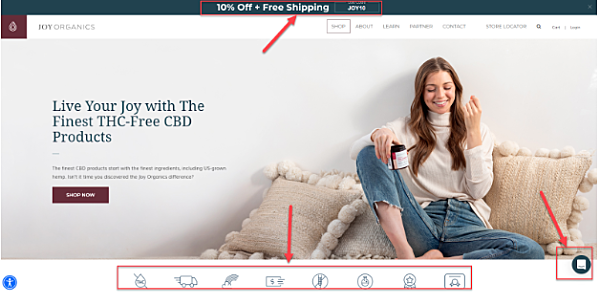
Once you generate leads, it's time to turn those clicks into high-end consulting offers and contracts.
1. Create offers focused on value
High-end consulting is all about offering value. If you can solve a problem and make or save a business money, they will be happy to pay the big bucks.
Let’s say, for example, that a prospect has been running a small coaching business for three years. They've built a good customer base, but haven't been able to hit that six-figure profit number they've been aiming for. They've tried several strategies, like organic Instagram growth and/or PPC ads, but nothing seems to be working.
At this point, they can either keep investing time and money into guessing and experimenting or they can bring in someone who has a proven system for scaling small coaching businesses fast and who has helped a dozen small businesses hit six figures in the last few years.
Which path sounds better?
That's the value of a high-end consultant, in a nutshell.
Keep in mind, your high-end consulting offer should be like an elevator pitch: short and to the point. Focus on the results and the value you offer, and leave the minute details for later.
Time yourself digesting your landing page offer and calls to action using a time management tool. If it's too long, condense it and cut content out. Aim for less than two minutes, whenever possible.
2. Create broad, but valuable content
Not all buyers have the same struggles, and not all buyers will want what you have to offer. That's fine.
If you're getting a lot of “I’m not interested” or "That’s not what we need right now," then you may be offering clients content that is too niche.
The first step is to learn how to start a successful blog on your site so you can provide valuable content in the form of blog posts, whitepapers, case studies, or whatever else is relevant to your audience.
But don’t let the thought of starting a blog overwhelm you. There’s loads of blogging tools and platforms that make it easier than ever to get up and running in just a few days.
Once you’ve started a blog, begin creating niche content that packs a ton of value, like this LastPass Guide:
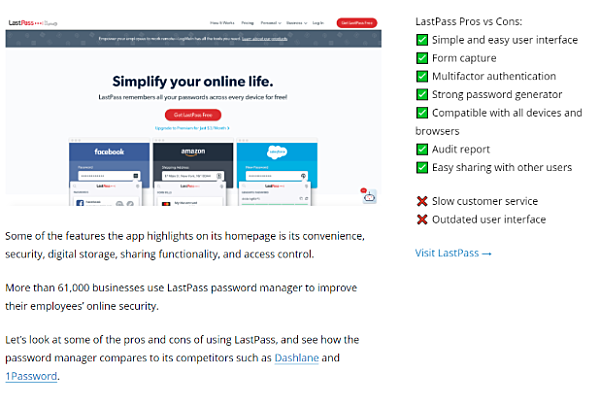
By covering every step in the process, this content appeals to a wide range of searchers.
Or, consider developing a study with unique data that you can use to convey the need of your coaching. For example, a survey on Mental Health in America:

In another niche, like learning languages, you can do this by creating content around specific proficiencies (e.g., professional, native), like Preply does on messaging a recruiter on LinkedIn:
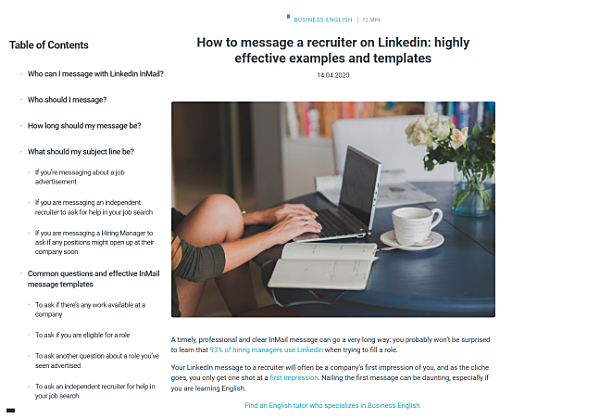
This will allow you to promote anything from products to services and even learning packages.
When you create long content like this, be sure to include a hyperlinked table of contents so readers can jump directly to the section they need.
3. Cut your prospective customer list — then customize content
You can't be everything to everyone. And trying to be everything to everyone will lead to burn out.
Break down who your ideal clients really are, then look at the problems they face most often.
Which problems are you truly prepared to solve?
Which will save your clients the most money or launch them into massive growth?
Then, cut out the bottom 20% of your target audience. According to the Pareto Principle, these are the clients who take up 80% of your time.Also known as the 80-20 rule, this principle states the majority of results tend to come from a minority of causes.
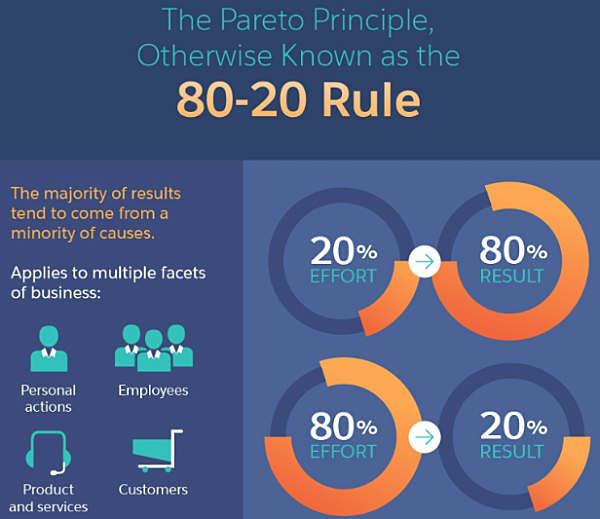
These are the clients who are unsure, who maybe have the cash but are hesitant to spend it, or who simply don't know what they need.
These are the customers who will take up too much of your time.
Once you cut these customers from your list, create custom landing pages for each of your remaining client types.
- What challenges are they facing?
- What systems do they need help building?
- What tone do they prefer?
No matter which stage your prospect is in, be sure to use a grammar tool like Grammarly to help you tailor your language to a specific audience.
For example, do they prefer a casual tone or a more formal one?
You may even use a different tone on your landing page vs. your blog content.
However, I prefer using an SEO/CRO copywriting group to handle these things for me so that I can focus on my zone of genius.
Don’t forget that the work doesn’t end once you hit “publish." Be sure to A/B test different headlines that appeal to different segments and their needs to see what's most effective.
Once you’ve done this, you can start to hone in on specificity in your content. Broad content drives a big audience, while that audience can then funnel into dedicated landing pages.
From these pages, users still might not be ready to convert. Here is where you implement specific content.
For instance, Medical Alert Buyer’s Guide masters this, using separate content pages for their niches like AARP Members:
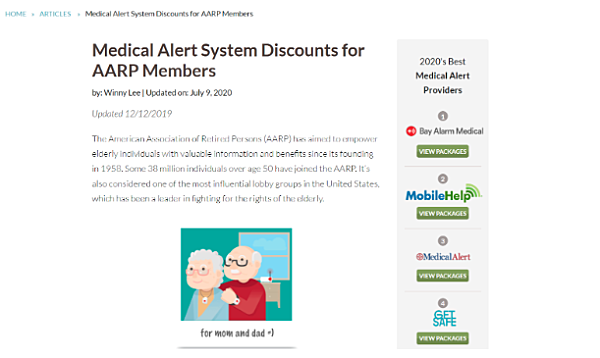
On another note, you can integrate your landing pages with personalized questionnaires to capture prospect engagement and gather key insights for future reference.
Another good way to personalize the experience of your website’s visitors is to make your page conversational.
Answering your prospects’ questions and addressing their concerns in real-time can give you a real advantage and help you build trust.
You can consider installing a live chat or creating a chatbot for your landing page to be available to your audience 24/7.
4. Utilize social proof in video format
Clients will not be willing to pay top dollar unless they know you can deliver results. Unlike low-cost items, your service is expensive, but it is an investment.
Still, customers need to feel confident before they will make a purchase.
That's where social proof comes in. We see social proof everywhere, both in the real world and online, as well as via referral programs.
According to Conversion XL: "Social proof is based on the idea of normative social influence, which states that people will conform in order to be liked by, similar to or accepted by the influencer (or society)."
When it comes down to it, we really do want to be like everyone else. Or at least everyone who is like us.
Combining the power of video with the power of social proof creates a one-two punch that will drive those high-end conversions you need.
Video is one of the more effective marketing channels, with the average person consuming six hours of video content per day. And, it isn't all Netflix and Hulu, either. Most consumers want more content from the brands they support.
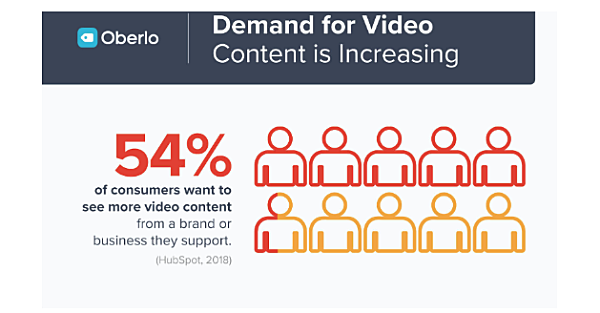
Mix video and social proof together, as Cubefunder does on its landing page, and you have a powerful recipe for turning those leads into high-dollar customers:
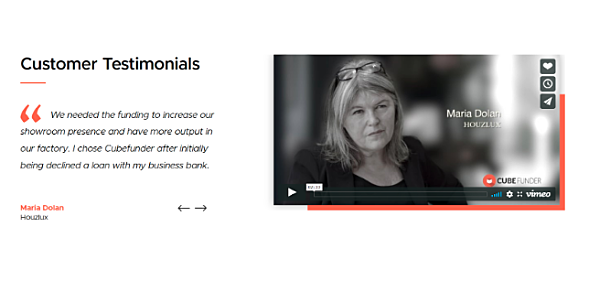
Why is this so effective?
Social proof is powerful because the reviewer is relatable and mentions specific pain points they faced, which are likely issues for other clients as well.
They also offer specific numbers, which is more convincing.
High-end consulting is going to be more effective with the addition of social proof. Using a video allows potential customers to better relate to the reviewer, and therefore trust them more.
Don’t worry too much about the production as there is lots of video editing software for Hollywood worthy video content.
5. Craft a winning proposal
You've used the steps above to craft your offer, and you've got some interest. The next step is to craft a top-notch proposal.
You could even utilize instant proposal features to automate the process, like uSERP:
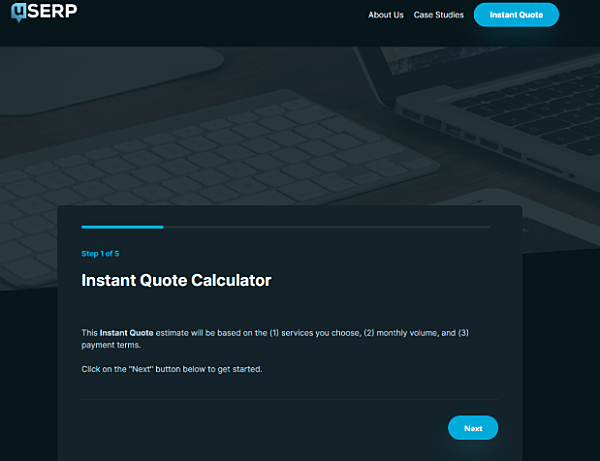
I recommend creating a proposal and then sending a calendar meeting invite with your prospect to discuss it, where you can add more value.
To build a successful coaching and consulting business, all you really have to do is focus on helping a specific type of person or business solve a specific set of problems.
In other words, if you want to charge high-end prices, you need to solve high-end problems.
That’s it.
Alright, maybe it's not quite so simple. However, after reading this blog, you have a clear game plan for building a strong, repeatable system for turning leads into high-end customers with your content.


